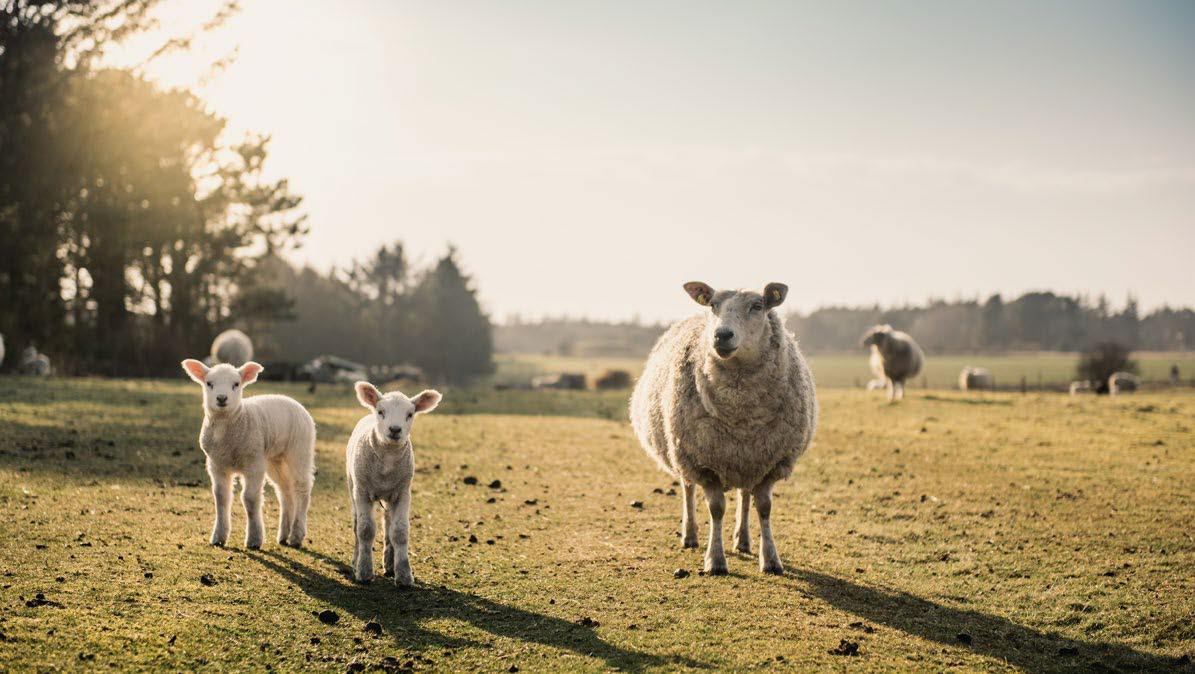SIG in the Spotlight: Sheep, Camelid and Goat Veterinarians Group
17 Apr 2025
In this edition of SIG in the Spotlight, hear from Sheep, Camelid and Goat Veterinarians (SCGV) Group President Dr Peter Windsor, as he explains the key benefits of joining the SCGV, the upcoming International Sheep Veterinary Congress and plans for the future.
Can you provide an overview of the Sheep, Camelid, and Goat Veterinarians Group and its mission within the AVA?

The SCGV SIG aims to raise the standards of sheep, camelid and goat veterinary practice and services through encouraging the professional development of our membership veterinarians. We are committed to improving the health, welfare and productivity of the sheep, camelid and goat industries of Australia and beyond. This includes promoting these industries & our veterinary expertise globally where the majority of SCGV products are marketed.
The short history is that the SIG began as the Australian Sheep Veterinary Society in 1984 and later the Australian Sheep Veterinarians in 2005, before merging with the Australian Alpaca Veterinarians to become the Sheep, Camelid and Goat Veterinarians.
What are the key benefits of joining SCGV for veterinarians, and how does it support their professional development?
The SIG provides an important forum for exchanging ideas and knowledge as continuing education for small ruminant interested veterinarians. As the SCGV SIG promotes linkages to the relevant industry, it has an important role in promoting awareness of the critical role of veterinarians in addressing key food security, food safety, biosecurity, biodiversity and one health issues of relevance to both rural and urban communities and the broader livestock-focused economy.
Why consider joining the SCGV SIG?
Small ruminant veterinarians of the world share a unique camaraderie that is simply not as present and viable in the other professional organisations, in my opinion. It is extraordinarily interesting how varied small ruminant farming is across the globe and how remarkable the history of the sheep industry particularly is in Australia. Our segment of the profession has made major contributions to global animal health here, yet we required to remain very ‘grounded’, focusing on flock and herd health and welfare management, demanding an understanding of the calendar of farm operations and priorities of farm managers. This means an interesting and often challenging shared dialogue with our plethora of stakeholders, especially advocating for our animals, sometimes on a bridge crossing the divide between producers.
How does SCGV engage with veterinarians who may not yet specialise in sheep, camelid, or goat health but are interested in these fields?
The SCGV SIG encourages vets with only occasional contact with small ruminants to join our active program of continuing education resources. These include the SCGV e-discussion list forum and Facebook page, regular webinars, the recently released ‘Sheep Toolkit’, our regular ‘standalone’ SCGV conferences and SCGV days within the annual AVA conference, and importantly, our international linkages, with our hosting of the International Sheep Vet Conference in Wollongong this October.
How are preparations going for the International Sheep Veterinary Congress in October?

The ISVC is very much on-track to be a great success, with all aspects progressing well. The Novotel venue is booked, registrations have commenced, and we have received, reviewed and accepted about 180 papers from 32 countries, plus numerous posters. The plenary and keynote speakers have been arranged and whilst there is still room for more sponsorship, the pre-conference and post-conference tours are fully subscribed. We have participants from 9 countries for the pre-conference ‘outback’ tour starting in Melbourne on October 15.
How do these conferences help veterinarians stay at the forefront of advancements in small ruminant and camelid health?
Global small ruminant production is an extremely important livelihood activity, with these species providing critical socioeconomic benefits to families and other businesses through dairy, meat, fibre and environmental management contributions. There is an enormous and rapidly growing scientific evidence-base that enables these industries to thrive, through improved management of small ruminant livestock health, production and welfare threats and opportunities. The ISVC, SCGV and AVA Conferences provide opportunities for scientific progress of our many disciplines to be shared in a more digestible manner than is generally available through the peer-reviewed scientific literature.
How does SCGV contribute to improving animal welfare standards for sheep, camelids, and goats in Australia?
Progressing small ruminant animal welfare is a fundamental objective of the SCGV and increasingly important. A number of the most challenging yet ongoing welfare issues that face the small ruminant industries are complex, with a broad range of opinions and challenges to policy development, reflecting the range of roles of our professional membership. For example, the challenges of the transition from the live sheep export industry and the challenges of the ongoing mulesing debate, both lie within our role as a SIG.
What are your aspirations for SCGV over the next 5-10 years, particularly in terms of education, research, or advocacy?
Whilst historically the unique progress of our Merino sheep enabled development of one of the most important industries for the socioeconomic development of post-European settlement in Australia, it seems that increasingly, the importance of our small ruminants is not as widely recognised as it should be, at least by urban populations not understanding the significance of our small ruminant exports. Our products are world class, with Australia now the largest exporter of sheep meat, an increasingly important source of goat meat, the fine quality of our Merino and alpaca fibre is the envy of the world, and the quality of our goat and sheep dairy products is now on an important upward trajectory. Our aspiration as a SIG is to ensure that Australia is increasingly recognised as the global leader in small ruminants husbandry and that this is reflected by a veterinary profession that is dedicated to progressing the science of small ruminants health and husbandry.
Are there any emerging challenges or opportunities in sheep, camelid, and goat industries that SCGV is preparing to address?
The ongoing challenge for the SCGV SIG is the viability of rural practices and improving access of veterinarians to farming enterprises, ensuring we grow our disease surveillance and quality assurance systems. The current global financial uncertainties with chaotic trading policies cascading from the USA, requires that our privileged biosecurity status is both championed and enhanced by our SCGV in harmony with our numerous small ruminant industry stakeholders.
For veterinarians who are considering joining SCGV, what would you say to encourage them to take that step?
Small ruminant farming systems in Australia are highly pleomorphic, ranging from peri-urban ‘pets’ to major wool producing enterprises, to feral goat harvesting operations, occurring in all states across a vast area of our continent. This presents some of the most challenging issues in farming management, particularly as we see the burden of climate-change challenges including flooding, fire and drought, wreaking havoc on our farmed animals and wildlife. Australia urgently requires more veterinarians to recognise and embrace our important role in ensuring the many millions of our small ruminants are properly cared for, by offering services to producers that improve their risk management and profitability.
Tell us a little about you – when did you join the SIG, how did you become president and how long have you been an AVA member?

I was a student member of the AVA and then an ongoing full member since I graduated in 1977, joining and continuing in the Sheep and Cattle SIG’s since their inception. I have also been in the Animal Welfare, Public Health and Education SIGs at various times. My interest in livestock reflects my rural background, with boyhood and ongoing passion for agriculture. I was raised in and near Wagga, with abundant access to mixed farming with cropping, wool sheep, pigs, beef, cattle and backyard poultry experience, then owning my own small beef farm through the ‘90’s. I ‘graduated’ to Emeritus Professor of livestock health and production at USYD in 2014 and have been busy with consultancy work mostly in SE Asia since, plus a collaboration in Spain. At the ISVC in Seville, Spain in 2023, the then SIG President Susan Swaney, twisted my arm to take on the President of the SIG role after her period ended. This was possibly because it seemed that a number of the Spanish and other internationals knew me. Surprisingly, the other members of SIG Executive apparently agreed.

